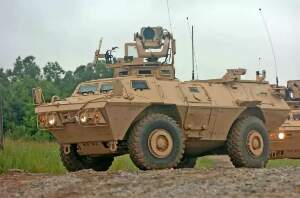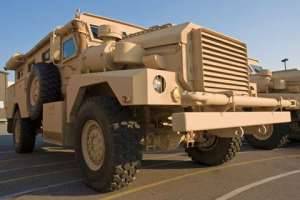So, Finnish Authorities yesterday found 69 Patriot air-defense missiles and another 160 tons of explosives on a ship bound for China. What!?
The British-flagged merchant ship Thor Liberty apparently left Emden, Germany with the missiles and stopped in Finland to pick up anchor chains when Finnish customs inspectors found the weapons — in crates marked as fireworks — during a routine sweep of the ship.
No one seems to know how 69 of the U.S.’ prized air defense missiles ended up on a ship bound for China but this kind of movement can only happen with the approval of someone in high places.
Keep in mind that Germany has a bunch of Patriot missiles and has sold its older Patriots to South Korea during times of high tension with North Korea. Finnish authorities couldn’t say if the ship was planning on making any stops before it arrived in China. It’s plausible the missiles found aboard the Thor Liberty are a German shipment bound for South Korea but you’d think we’d have heard about the deal; you’d also think they wouldn’t be “badly stored” and marked as fireworks.
Update: Germany is now saying that the missiles are part of a legit arms transfer to South Korea. No word on why it was done in such a shady manner.
Here’s the AP quoting a Finnish customs official:
“We have impounded the explosives and missiles and asked the Defense Ministry to transport and store them,” Lounatmaa said. “At this stage we don’t know where it (the cargo) was loaded on the ship or if the Thor Liberty planned a drop before its port of destination in China.”
Detective Superintendent Timo Virtanen of the National Bureau of Investigation said dock workers found the explosives — picric acid — badly stored on open pallets instead of in closed containers. They alerted inspectors who found the missiles in containers marked as holding fireworks.
Remember, the numerous versions of the Raytheon-made Patriot missiles are used by the U.S. and its allies to defend ground targets against all manner of aircraft and ballistic missiles.
Finnish officials have confiscated the deadly cargo and are investigating if this a breach of the country’s export laws.
I could kind of understand when that rogue shipment of Russian tanks was discovered in Africa, they were apparently going to help south Sudanese rebels. But this is on a different level. Who in China needs U.S-made air defense missiles besides the PLA (so that it can reverse engineer them)? Maybe this is some sort of counter-espionage project aimed at supplying China with faulty, obsolete versions of the missiles. Who knows. This one will be interesting to follow.







































